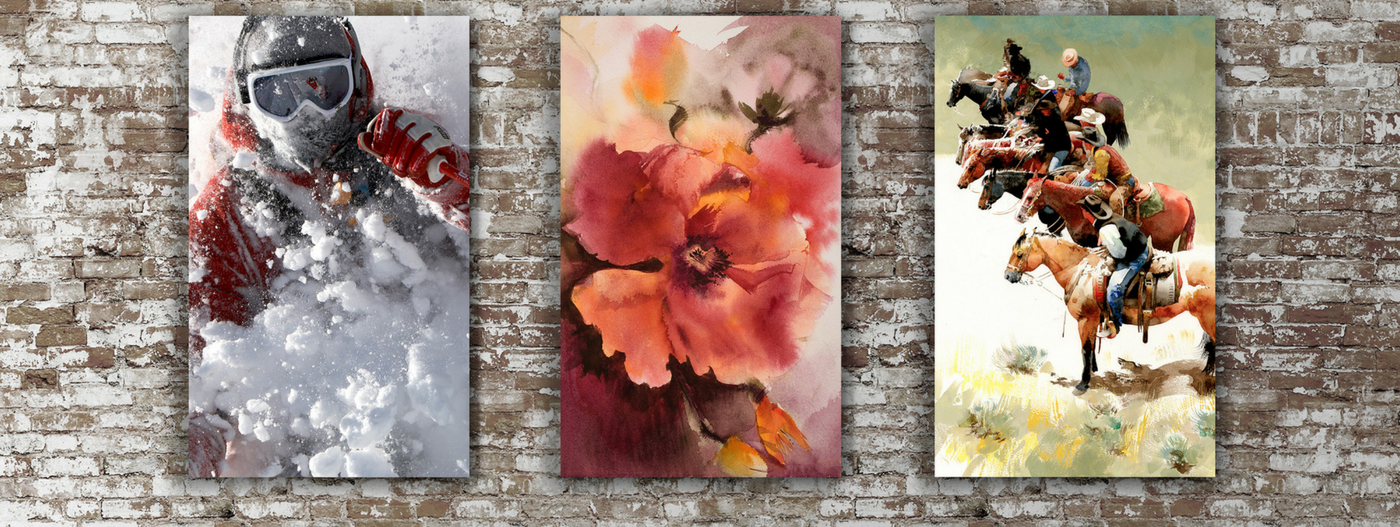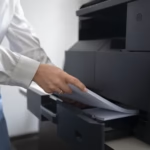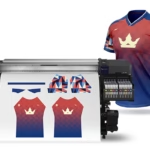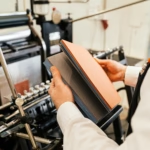
In this blog post, we’ll walk you through the key differences between giclée and other printing techniques. Whether you’re an artist selling limited editions or a photographer printing large-format landscapes, understanding these distinctions will help you make smarter choices for your work and your customers.
What Is Giclée Printing?
“Giclée” (pronounced zhee-CLAY) is a French word meaning “to spray,” and it refers to a method of printing using archival pigment-based inks and high-resolution inkjet printers. The process began to be developed in the late 1980s to provide gallery-quality reproductions that closely resemble the original artwork.
To be considered a true giclée print, the following criteria are usually met:
- Archival pigment inks (not dye-based)
- High-resolution printing (read more about print resolution here)
- Acid-free, archival-quality paper or canvas
- Wide color gamut and tonal range
The result? A museum-grade print with vibrant color, fine detail, and a lifespan of over 100 years when properly cared for.
Common Alternative Printing Methods
While giclée is often preferred for fine art and photography, there are several other printing methods available. Each has its strengths depending on your needs, budget, and target audience.
1. Standard Inkjet Printing
Inkjet printers are common in homes and offices, and many commercial labs also offer inkjet printing. While giclée is technically a type of inkjet printing, standard inkjet prints typically use dye-based inks rather than pigment-based inks, which means they are less resistant to fading over time. These prints are usually done on photo paper rather than archival materials, making them better suited for personal use, portfolios, or low-cost art prints where longevity isn’t the top priority.
Resolution and color range are also lower than what you’d get with a giclée printer. That said, standard inkjet printing is affordable and fast, and it’s a good option for casual prints or high-volume needs.
2. Laser Printing
Laser printers use toner (powder) and heat to bond the image to paper. This method is best suited for text-heavy documents, flyers, brochures, or temporary prints. While color laser printers can produce decent quality images, they lack the subtle tonal gradations and color accuracy needed for fine art or photography.
Artists and photographers typically avoid laser printing for anything they intend to sell or frame. However, laser prints may be useful for mock-ups or promotional materials.
3. Dye-Sublimation Printing
Dye-sublimation (or dye-sub) printing is a popular choice for printing on specialty items like mugs, t-shirts, metal panels, and fabric. It works by transferring dye onto the surface using heat. The final print is durable and resistant to water, scratches, and fading.
However, dye-sub printing doesn’t match giclée when it comes to fine detail or nuanced color. It’s also limited in terms of printable materials—typically polyester-coated substrates. For artists and photographers looking to produce gallery-ready pieces, dye-sub is more suited to merchandise and promotional items than fine art prints.
4. Offset Printing
Offset printing is a traditional commercial printing technique used for producing large runs of books, posters, and magazines. It involves transferring ink from a plate to a rubber blanket, then onto the paper. Because the setup is labor-intensive, it’s most cost-effective at high volumes.
Color fidelity and detail are decent, but offset printing doesn’t offer the same resolution or depth as giclée. In addition, the inks used aren’t usually archival. Offset is ideal for mass production but not for limited-edition, high-value artwork. Some artists use offset for posters or affordable print runs, but it’s not considered a premium method for fine art reproduction.
Why Choose Giclée?
For artists and photographers who care about quality, longevity, and customer satisfaction, giclée printing offers clear advantages:
- Superior Color Accuracy: Giclée printers use a wider range of inks (typically 8–12) to capture subtle transitions and true-to-life hues.
- Archival Quality: Prints made with pigment-based inks on acid-free paper can last over a century without noticeable fading.
- Professional Appearance: The detail and texture achieved through giclée are ideal for fine art and high-end photography.
- Flexibility: Giclée printing works beautifully on various surfaces, including watercolor paper, canvas, and smooth matte or gloss stock.
While giclée may cost more per print, the investment pays off in presentation and durability—qualities that discerning collectors, galleries, and buyers appreciate.
Final Thoughts
Understanding the differences between giclée and other printing methods can make a big impact on your art business. If you’re serious about selling your work or displaying it professionally, giclée is the best way to ensure your prints reflect the same care, detail, and emotion as your originals.
At MasterLab, we specialize in museum-grade giclée printing for both photographers and artists. Our expert team works closely with each client to match colors, recommend materials, and deliver beautiful, archival-quality prints every time.
Want to see the difference for yourself? Contact us today to learn more about our custom printing services!






